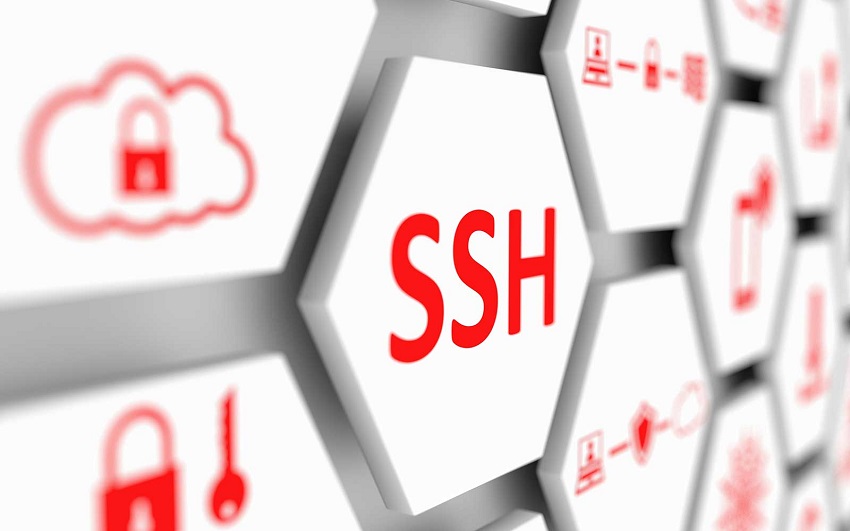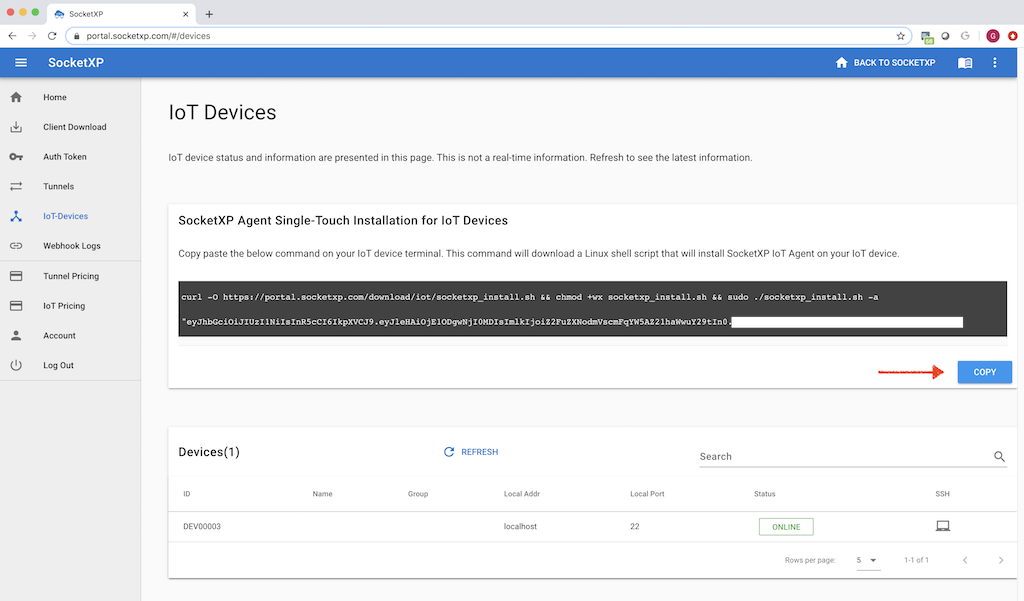Mastering Remote SSH IoT Over Internet AWS Example: Your Ultimate Guide
Ever wondered how you can securely connect your IoT devices to the internet using SSH through AWS? Well, buckle up because we’re diving deep into the world of remote SSH IoT over the internet with AWS examples. This isn’t just about tech jargon; it’s about empowering you to take control of your devices from anywhere in the world. Whether you’re a developer, hobbyist, or someone who wants to geek out on IoT, this guide has got you covered.
Imagine being able to monitor and manage your smart home devices, industrial sensors, or even a remote weather station from thousands of miles away. Sounds futuristic, right? But here’s the deal—it’s totally doable with the right tools and setup. AWS offers a robust platform that makes remote SSH IoT connections not only possible but also secure and scalable. Stick around as we break it down step by step.
Now, before we dive into the nitty-gritty, let’s set the stage. This guide isn’t just a bunch of commands thrown together. We’ll cover everything from the basics of SSH and IoT to advanced configurations using AWS services. By the end of this, you’ll have the knowledge and confidence to implement your own remote SSH IoT setup. So, are you ready to level up your tech game? Let’s go!
Read also:Daniel Sunjatas Greys Anatomy Character A Deep Dive Into His Legacy
What is Remote SSH IoT Over Internet?
Let’s start with the basics. Remote SSH IoT over the internet essentially means using Secure Shell (SSH) to remotely access and control Internet of Things (IoT) devices connected to the internet. Think of SSH as a secure tunnel that lets you communicate with your devices without compromising their safety. In today’s connected world, where devices are scattered across different locations, having remote access is more than just convenient—it’s essential.
Why Use SSH for IoT Devices?
SSH isn’t just any protocol; it’s a powerhouse when it comes to secure communication. Here’s why it’s the go-to choice for IoT:
- Encryption: SSH encrypts all data transmitted between your device and the server, keeping prying eyes at bay.
- Authentication: It uses strong authentication mechanisms to ensure only authorized users can access the devices.
- Reliability: SSH is stable and works seamlessly over unstable or low-bandwidth connections, making it perfect for IoT devices.
When you combine SSH with IoT, you get a setup that’s not only secure but also flexible enough to handle various use cases. Whether you’re managing a fleet of sensors or controlling a single smart device, SSH has got your back.
Understanding AWS in Remote SSH IoT
AWS, or Amazon Web Services, is like the Swiss Army knife of cloud computing. It offers a wide range of services that make remote SSH IoT setups a breeze. From hosting your IoT devices to managing secure connections, AWS has tools for every part of the process. Let’s explore how AWS fits into the picture.
Read also:Gary Sinise Net Worth The Man Behind The Mustache And His Impressive Fortune
Key AWS Services for IoT SSH
Here are some of the AWS services you’ll likely use in your remote SSH IoT setup:
- EC2 Instances: These are virtual servers in the cloud where you can host your SSH server and manage IoT devices.
- AWS IoT Core: A managed cloud service that lets you securely interact with your IoT devices at scale.
- VPC (Virtual Private Cloud): Helps create a private network for your devices, adding an extra layer of security.
- CloudWatch: Monitors your devices and logs all activities, ensuring everything runs smoothly.
By leveraging these services, you can build a robust and secure infrastructure for your IoT devices. AWS takes care of the heavy lifting, so you can focus on innovation.
Setting Up Remote SSH IoT Over Internet AWS
Now that we’ve covered the basics, let’s get our hands dirty with the setup process. Setting up remote SSH IoT over the internet with AWS involves a few key steps. Don’t worry if it sounds complicated—we’ll walk you through each one.
Step 1: Choose Your IoT Device
The first step is selecting the right IoT device. Whether it’s a Raspberry Pi, ESP32, or any other microcontroller, make sure it supports SSH. Once you’ve picked your device, set it up with a Linux-based operating system. This will make it easier to configure SSH later on.
Step 2: Create an AWS EC2 Instance
Next, head over to the AWS Management Console and create an EC2 instance. Choose an instance type that fits your needs and configure the security group settings to allow SSH traffic. Make sure to download the key pair file as you’ll need it to connect to your instance.
Step 3: Configure SSH on Your IoT Device
Now it’s time to set up SSH on your IoT device. Install the OpenSSH server and generate SSH keys. These keys will be used to authenticate your device when connecting via SSH. It’s crucial to follow best practices here to ensure maximum security.
Connecting IoT Devices to AWS
Once your setup is ready, it’s time to connect your IoT devices to AWS. This step involves configuring your devices to communicate with the AWS cloud. Here’s how you can do it:
Using AWS IoT Core
AWS IoT Core makes it easy to connect your devices to the cloud. You’ll need to register your device with AWS IoT Core and configure it to send data securely. This involves creating certificates and policies that define what your device can and cannot do.
Setting Up VPC for Security
Security is paramount when dealing with IoT devices. Setting up a Virtual Private Cloud (VPC) ensures that your devices are isolated from the public internet, reducing the risk of unauthorized access. You can configure subnets, route tables, and security groups within your VPC to tailor it to your specific needs.
Securing Your Remote SSH IoT Setup
Security should always be a top priority when working with IoT devices. Here are some tips to keep your remote SSH IoT setup secure:
- Use strong passwords and enable multi-factor authentication (MFA) whenever possible.
- Regularly update your devices and software to patch any vulnerabilities.
- Limit SSH access to trusted IP addresses to reduce the risk of unauthorized access.
By following these best practices, you can significantly enhance the security of your IoT devices. Remember, a secure setup is a happy setup!
Remote SSH IoT Over Internet AWS Example
Let’s put everything we’ve learned into practice with a real-world example. Imagine you have a fleet of temperature sensors deployed in different locations. You want to monitor and manage these sensors remotely using SSH over AWS. Here’s how you can do it:
Step 1: Deploy Sensors with SSH
Install SSH on each sensor device and configure it to connect to your AWS EC2 instance. Make sure to use unique SSH keys for each device to maintain security.
Step 2: Configure AWS IoT Core
Register each sensor with AWS IoT Core and define policies that allow them to send temperature data to the cloud. Set up rules to trigger actions based on the data received, such as sending alerts if the temperature exceeds a certain threshold.
Step 3: Monitor and Manage
Use AWS CloudWatch to monitor the performance of your sensors and log all activities. This will help you identify and resolve issues quickly, ensuring your setup runs smoothly.
Advanced Configurations
Once you’ve mastered the basics, you can explore advanced configurations to further enhance your remote SSH IoT setup. Here are a few ideas:
- Automate Tasks: Use AWS Lambda functions to automate repetitive tasks, such as data processing or sending notifications.
- Scale Your Setup: Leverage AWS Auto Scaling to handle spikes in traffic or add more devices to your network without breaking a sweat.
- Integrate with Other Services: Connect your IoT devices with other AWS services like S3, DynamoDB, or SageMaker to unlock new possibilities.
These advanced features allow you to build more sophisticated and powerful IoT setups that can adapt to your growing needs.
Troubleshooting Common Issues
No setup is perfect, and you’re bound to encounter some issues along the way. Here are some common problems and how to fix them:
- Connection Issues: Check your security group settings and ensure that SSH traffic is allowed.
- Authentication Failures: Verify that your SSH keys are correctly configured and match the ones on your devices.
- Data Transmission Problems: Use AWS CloudWatch logs to identify and resolve any issues with data transmission.
By staying vigilant and addressing issues as they arise, you can keep your setup running like a well-oiled machine.
Conclusion
Remote SSH IoT over the internet with AWS examples isn’t just a tech buzzword; it’s a game-changer for anyone working with IoT devices. From setting up secure connections to leveraging advanced AWS services, this guide has equipped you with the knowledge and tools to take your IoT projects to the next level.
So, what are you waiting for? Start experimenting with your own remote SSH IoT setup today. And don’t forget to share your experiences and insights in the comments below. Who knows? You might just inspire someone else to join the IoT revolution!
Table of Contents
- What is Remote SSH IoT Over Internet?
- Understanding AWS in Remote SSH IoT
- Setting Up Remote SSH IoT Over Internet AWS
- Connecting IoT Devices to AWS
- Securing Your Remote SSH IoT Setup
- Remote SSH IoT Over Internet AWS Example
- Advanced Configurations
- Troubleshooting Common Issues
- Conclusion



